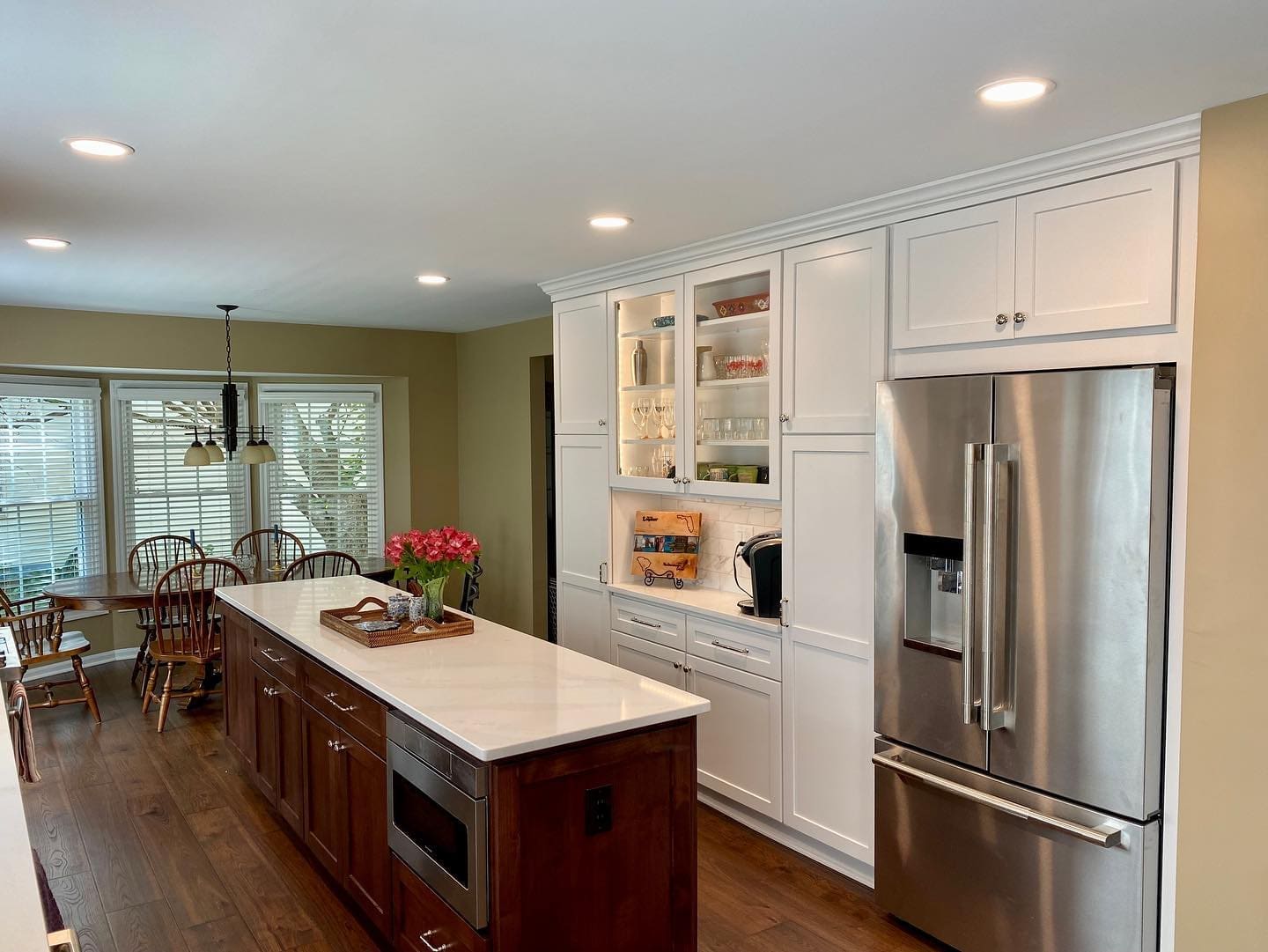Lighting is an important part of any room, but the lighting for the kitchen area in a North Virginia home is certainly one of the most critical areas. All kinds of dark spots can develop in the kitchen due the amount of cabinets and appliances in the room. Providing bright lighting for work areas, when and where it is required, is essential; however, low light options are important to facilitate the multi-functional spaces in a kitchen and to provide accent to special features. Saving energy is also a factor in choosing light fixtures and the bulbs that go with them for green-living Washington DC residents.
Here are some of the current and forward moving trends in kitchen lighting:
- LED. According to the National Kitchen and Bath Association (NKBA) the use of LED lighting by members in their kitchen designs increased from 54% in 2011 to 70% in 2012. This trend towards more energy efficient lighting is one that will certainly continue as incandescent bulbs are being gradually phased out in the U.S. over the next two years. The fact that the lighting provided by LED lights offers a more natural coloring than that of Compact Fluorescent Lights (CFL) and does not use mercury in its components has caused LED lighting to push ahead while the use of CFL lighting appears to be in decline.
- Dimmer Dining. Since many kitchens are including eating areas as part of the kitchen design, either at the island or at a peninsula countertop, focused lighting with dimmer switches are becoming a must have in many kitchens. Islands and peninsulas will generally have focused lighting in the form of two to three mini-pendants or one larger drop-down fixture. This is just the beginning of the mood lighting that is being requested by Springfield, Virginia homeowners for their new kitchens.
- Layered Lighting. The value of multi-layered lighting options has been a trend that continues to grow. New kitchens will often have bright overhead lighting, sometimes provided in the form of recessed cans in the ceiling, as you will see in many of the kitchens in our portfolio. Under-cabinet work surfaces will have a second layer of lighting to overcome the shadows from the overhead cabinets and food preparers, when mixing up that batch of brownies to satisfy a sweet tooth. Additional layers move up the walls with lighting inside glass faced cabinets, which show off crystal or décor items. The highest layer may be behind the cornices at the top of the cabinet line and the lowest layer down along the toe-kick area of the cabinets. These minimal upper and lower light strings are often used as night lighting for the midnight snack or preparing the baby’s bottle for the early morning feeding. A variety of lighting options foster energy savings, as well, since bright overhead lights with higher energy usage are only used when truly needed.
- Light Fixtures. Trends in faucets and cabinet hardware finishes often influence the metal finishes being selected for kitchen light fixtures. The NKBA shows a trend back towards polished chrome and away from the brushed nickel finishes that had surged in recent years. Stainless steel and brass finishes also remain popular. Styling trends in light fixtures will generally follow the cabinet choices that are trending, which appears to be transitional, a blend of the simple lines of contemporary styling with a bit of embellishment taken from more traditional styles. Pendants are definitely holding their own as one of the most popular choices for focus lighting. Simple lines with bold shapes and bright solid colors or colored glass shades are popular choices.
Whether you are planning a full kitchen remodel or just a few updates, changes and additions to your kitchen lighting can make a big impact on both the look and functionality of your kitchen’s work and eating areas. At Select Kitchen & Design, we’d love to show you some unique examples of how lighting can be used to transform your kitchen. Give us a call at 703-866-4224 or contact us through our website to make an appointment.






